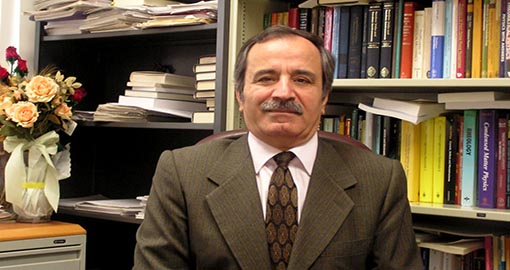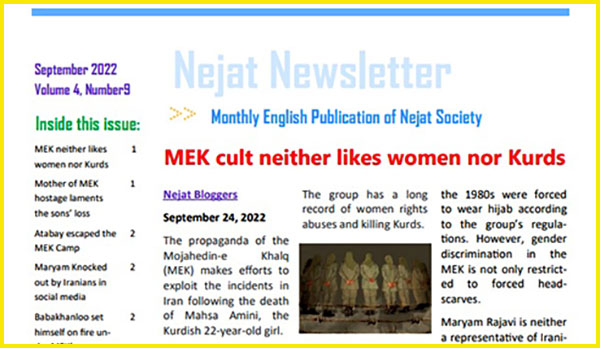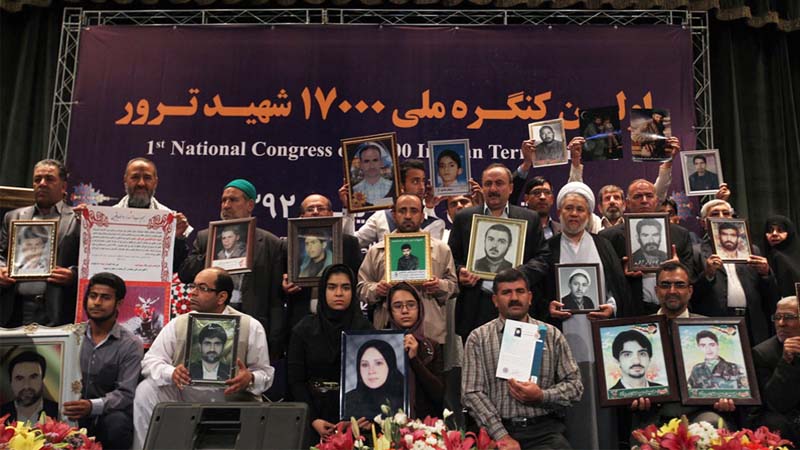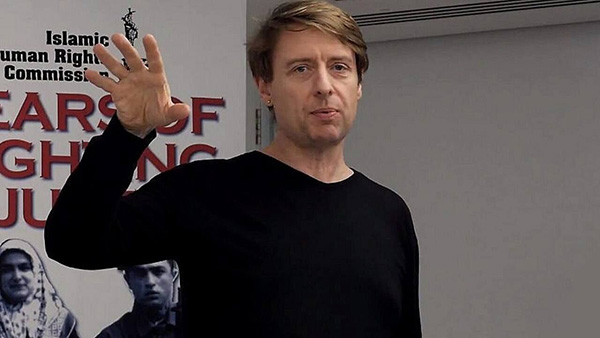On September 13 Mahsa Amini (called Zhina by her own family), a 22-year-old woman from the Kurdistan province in western Iran, was in Tehran to visit her family and friends. She was detained by Iran’s “guidance patrol” (referred to as “morality police” in the Western press) because, supposedly, she did not have the proper mandatory Islamic Hijab. While in detention, she collapsed and was taken to a hospital. Although the Iranian government claimed that she had suffered a stroke followed by a heart attack, eyewitnesses, including some that had presumably been detained with her and transferred by the same police car to the detention center, reported that she had been mistreated and violence had been used, and that her skull might have cracked. They also reported that, after she collapsed, it took some time before she was taken to a hospital. Three days later, on September 16, she passed away.
Amini’s outrageous murder sparked widespread protests throughout Iran. Tens of thousands of people took to streets to protest her death and, more generally, the discriminations against women and their constant humiliation by the hardliners, mismanagement of national affairs including pollution of the environment and wasting of limited sources of water (Iran has been suffering from a severe draught), deeply-rooted corruption, and tight restrictions on political and social freedom. Add to that the suffocating economic sanctions imposed by the Trump administration and continued by the Biden administration, and the result is a country of 87 million people in despair. The demonstrations have continued ever since, although their intensity and the size of the demonstrating population have decreased very significantly.
The most important aspect of these demonstrations is that they are led by young people, particularly the university students, who are mostly in their 20s, and even in their teens. A secret report by the government that was leaked to the press stated that the average age of those that have been detained by the security forces during the demonstration has been 17. This is unlike the previous large-scale demonstrations in 2009 that were led by the middle class, and the protests in 2018 and 2019 that were led by the poor people in smaller towns. The young generation, born after 1995, has no memory of the dictatorship of Shah Mohammad Reza Pahlavi before the 1979 Revolution, and has only lived under a theocratic system that not only has been unable to address their economic concerns, but has also continuously tried to impose a strict way of life on the population. In the age of global communication and social networks, young people everywhere have access to information and are aware of the developments around the globe, and the Iranian youth is no exception.
Similar to the widespread protests in 2009 during the Green Movement, following the disputed presidential elections, as well as the protests in January 2018 and November 2019, recent protests were totally peaceful during the first few days, after which they turned violent. [..]
Propaganda by Iran’s Foes
To be sure, aside from the back-breaking effect of U.S. economic sanctions, Iran’s troubles are domestically made, with the chief culprit being the hardliners who not only have proven not to be capable of running at least an efficient economy, but also prevent other groups to take power and stir the nation into a more constructive direction. Therefore, the protests by the Iranian people are completely justified and legitimate. But this does not imply that outside forces do not play any role in the current crisis. They have also tried to exploit the situation in order to advance their own agenda against Iran.
Using an American-built base in Iraq, a Kurdish separatist group, the Party of Free Kurdistan, widely known by its Kurdish acronym PAK, has been attacking Iran. During the war with the Jihadi Islamic State, known as ISIS, PAK forces received training and weapons from the United States, which are now using them against Iran. PAK forces may also have received aid from Saudi Arabia, Iran’s archenemy. Other small separatist groups have also been active, and have even hired lobbyists in Washington.
Another terrorist group, Jaish ul-Adl (meaning “army of justice”), a Salafi Jihadist group linked with al-Qaeda, has been operating in Baluchestan and attacking the security forces. On October 26 ISIS carried out a terrorist attack in Shah Cheragh shrine in city of Shiraz in southern Iran, killing at least 15 people and wounding 19. The United States did not condemn the attack.
Saudi Arabia’s regime has also been hard at work. In addition to its Wahabi-Salafi ideology that provides the “spiritual” backbone for all Sunni terrorist groups, including Jaish ul-Adl, thousands of Twitter, Telegram, Facebook, and Instagram accounts seemingly owned by “Iranians” have been traced back to Saudi Arabia. These accounts constantly post provocative statements, spread false rumors, support the small separatist groups that operate from Iraq or Pakistan, and attack anyone who opposes what they espouse.
At the same time, Iran International, a TV channel based in London and funded by a firm widely believed to have links to the Saudi Arabia regime, broadcasts Farsi programs into Iran. These programs almost always attribute their reports to “sources in Iran” without any specification, and have played a leading role in inciting unrest and demonstrations. The TV refers to demonstrations as the “revolutionary movement of the Iranian people,” whereas the protests represent neither a revolution, nor even a movement—at least not yet—but rather are the manifestation of the deep and justified anger of the Iranian people against the terrible state of their nation and their theocratic regime. The aforementioned secret government report estimated that, overall, 175,000 people in all of Iran took part in the demonstrations, and this is a country of 87 million people.
Almost all the “experts” who take part in Iran International programs either advocate “regime change” in Iran—code words for military attacks—or support economic sanctions against the Iranian people, or belong to small separatist groups, or even all of them. The image of Iran that they draw for the audience is one of a nation without any hope for change from within, hence necessitating intervention by the international community.
Iran International had live broadcast of a gathering of MEK supporters, an Iranian exiled opposition group, which caused deep anger among Iranians. Until 2012 the MEK was listed by the State Department as a terrorist organization. It is universally despised by all Iranians due to its collaboration with the Iraqi regime of Saddam Hussein during the war with Iran in the 1980s, its spying on Iran’s nuclear program on behalf of Israel and the United States, and its collaboration with Israel in carrying out assassination and sabotage in Iran.
Iran International also interviewed a leader of al-Aḥwāz, a terrorist separatist group operating in Iran’s province of Khuzestan in southwest Iran, right after it had carried out a terrorist attack in 2018, which also deeply angered Iranian people. A review of Iran International programs clearly demonstrates that what it advocates is completely aligned with the goals of the Saudi Arabia regime regarding Iran, which is why many refer to it derisively as Saudi International TV or the Bin Salman TV, a reference to the de-facto ruler of that country, Crown Prince Mohammed Bin Salman. Several Iranian journalists that worked for Iran International resigned over the content and direction of its programs.
But, Iran International is not the only Saudi-linked TV that tries to stir troubles in Iran. The Al-Arabia TV based in Riyadh, the capital of Saudi Arabia, broadcasts many programs in which they advocate support for the Iranian separatist groups.
Demonstrations Outside Iran
There have also been many demonstrations in support of the Iranian people in Europe and the United States. While many well-intentioned Iranians have taken part in these demonstrations, as they should, many of such protests have been driven mainly by that part of Iran’s exiled opposition popularly referred to as the “fake opposition,” i.e., those who have supported economic sanctions, or military attacks, or efforts by the separatists to separate from Iran, or even all of them.
One of the key organizers of recent demonstrations has been Hamed Esmaeilion, an Iranian-Canadian author and dentist, who lost his wife and young daughter when Ukraine International Airlines flight 752, taking off from Tehran on January 8, 2020, was shot down by Iran’s military, killing all 176 people onboard. Before this tragedy, Esmaeilion was not a political activist, but he is now being promoted as a key figure in the exiled opposition.
While there is great sympathy for Esmaeilion, the plight of his loved ones, his quest for shedding light on what actually happened that led to the tragic downing of the passenger aircraft, and holding accountable all those who were responsible, his positions regarding Iran have raised many questions. Esmaeilion has stated that he is not political and is not after gaining power, but his actions speak otherwise. He has supported expelling Iranian diplomats from the G7 countries, continuing the sanctions regime (although he says that he supports “targeted” sanctions), and banning civilian flights to Iran, effectively making Iran a no-flight zone, all reminiscent of what happened to Libya before the so-called humanitarian intervention of NATO in 2011, which has destroyed the country and has partitioned it into several zones controlled by warlords.
Esmaeilion’s relations with some exiled Iranians who have always advocated harsh sanctions or military attacks on Iran has also raised many troubling questions. In particular, he has worked closely with Kaveh Shahrooz, a senior fellow at Macdonald-Laurier Institute in Canada, a right-wing “think tank” that advocated taking China and Iran to international courts for supposedly spreading COVID-19. Shahrooz has always advocated harsh economic sanctions against Iran, and is behind the drive to expel Iranian diplomats from the G7 countries. He also has close relations with Irwin Cotler, who played a key role in bringing Maryam Rajavi, the leader of the MEK, to Canada in 2014 to talk about violations of human rights in Iran, whereas the MEK itself, a cult-like organization, has a long history of terrorism and has committed too many atrocities. Cotler also played a key role in lobbying for MEK to be removed from the State Department’s terrorist list in 2012. He is also a member of the advisory board of United Against Nuclear Iran, a lobby for Israel.
But the relation between the trio does not end here. Esmaeilion is the head of an organization called the Association of Families of Flight PS752 Victims, representing the families of passengers of the Ukrainian aircraft shot down in Iran. Looking at the website of the Association, it quickly becomes clear that it is has gone well beyond seeking justice for the victims and their families, which all the reasonable people support. Last year, the Association published a “fact-finding” report about the flight, describing how the leaders of the Islamic Republic had reacted during the first week after downing of the aircraft, and its main claim that Iran’s military had deliberately shot down the airliner. It also made recommendations to Western powers and international officials about how to force the Iranian leaders to own up what they had done, including taking them to the International Criminal Court (ICC), imposing sanctions on those official who were presumably responsible for the catastrophe, and other suggestions. The family members have in fact asked the ICC to take up the case as a war crime.
It turned out, however, that the report, which in principle could be quite useful if it is objective without politicizing the tragedy, was prepared in collaboration with the Raoul Wallenberg Centre for Human Rights, a Canadian organization whose international chair is none other than Cotler. The center issued a statement in which it acknowledged its role in the preparation of the report, which it has apparently even sent it to the United Nations. The statement was signed by three people; Esmaeilion, Yonah Diamond, who is the legal counsel of the Center, and Oliveah Numan, strategic communication associate of the Sussex Strategy Group, a lobbying, communications, and consulting group in Canada, which is lobbying on behalf of Esmaeilion’s Association. Therefore, as already mentioned above, the Association has gone well beyond seeking justice for the victims of the downed Ukrainian aircraft, and is actively lobbying both in Canada and at the international level. This has created dissent within the Association, with at least two of founders, who also lost their loved ones, condemning the direction that the Association has taken; see here and here.
I believe Esmaeilion can play a constructive role in the protests about what is going on in Iran, provided that he cuts off his relationships with Shahrooz, Cotler, and any other entity that advocate harsh economic sanctions or military attacks on Iran, and declares unambiguously that Iran’s territorial integrity is non-negotiable.
The Biden Administration: Stirring Unrest and Promoting “Leaders” for the Protesters
The Biden administration has also gotten involved, trying to exploit the situation to advance its agenda regarding Iran, continuing yet another policy of the Trump administration. In addition to continuing the economic sanctions that its predecessor imposed on Iran, and adding even more to them, it has been actively pursuing a two-pronged strategy: stirring trouble, and promoting “future leaders” for Iran.
On September 16, The Washington Post reported that the Pentagon was carrying out a wide-ranging review of all its online psyops efforts, because a number of bot and troll accounts operated by its Central Command (CENTCOM), responsible for all US military operations in the Middle East, including Iran, had been exposed and banned by major social networks and online spaces. The social media research firm Graphika and Stanford Internet Observatory carried out a five-year evaluation of pro-West covert influence operations, which exposed the CENTOM role. Of course, as Kit Klarenberg, the British investigative journalist, wrote, it would be ludicrous, as The Washington Post had done, to suggest the United States’ “umbrage stemmed from CENTCOM’s egregious, manipulative activities which could compromise U.S. ‘values’ and its ‘moral high ground,’ [rather] it is abundantly clear that the real problem was CENTCOM being exposed.”
Klarenberg continued,
A key strategy employed by US military psyops specialists is the creation of multiple sham media outlets publishing content in Farsi. Numerous online channels were maintained for these platforms, spanning Twitter, Facebook, Instagram, YouTube and even Telegram. In some cases, too, fake journalists and pundits, with numerous “followers” on those platforms emerged, along with profile photos created via artificial intelligence.
For example, Fahim News claimed to provide “accurate news and information” on events in Iran, prominently publishing posts declaring “the regime uses all of its efforts to censor and filter the internet,” and encouraging readers to stick to online sources as a result. Meanwhile, Daricheh News claimed to be an “independent website unaffiliated with any group or organization,” committed to providing “uncensored and unbiased news” to Iranians within and without the country, in particular information on “the destructive role of the Islamic Revolutionary Guard Corps in all the affairs and issues of Iran and the region.” Their respective YouTube channels pumped out numerous short-form videos, presumably in the hope they would be mistaken for organic content, and go viral on other social networks. The Graphika and Stanford Internet Observatory researchers identified one instance in which media outlets elsewhere had embedded Dariche News content into articles…
Other CENTCOM psychological warfare (psywar) narratives have direct relevance to the protests that have engulfed Iran. There was a particular focus among one group of bots and trolls on women’s rights. Dozens of posts compared Iranian women’s opportunities abroad with those in Iran – one meme on this theme contrasted photos of an astronaut with a victim of violent spousal abuse – while others promoted protests against the hijab…
On the second front, Jake Sullivan, President Biden’s national security adviser, has met and kept in constant contact with Masoumeh Alinejad Ghomi, usually referred to as Masih Alinejad, a controversial political activist, and former Reformist journalist. I have already written about her. As I explained in my report last year, Alinejad is not even a political refugee, or former political prisoner in Iran. In fact, unlike many political activists, both within Iran and in exile, she never spent a single day in detention or jail.
Alinejad moved to Britain in 2005 where she was active as a Reformist journalist in exile, and still wearing some sort of Islamic hijab. In 2009 she asked the U.S. Embassy in London to grant her visa in order to interview the newly-elected President Barack Obama, which was granted in April 2009. She returned home briefly and, unlike the claim that she “fled” Iran, received her Iranian passport and left permanently in June 2009, right before Iran’s presidential elections and the birth of the Green Movement.
But Alinejad did not immediately join the “fake opposition” in the U.S. For six years she was not even a leading exile, and for a while was still covering part of her head as a symbol of the hijab. A well-known source in Washington, who wished to remain anonymous, told the author that Alinejad even called him at that time and complained about the behavior of many exiled Iranians, their unpatriotic attitude towards their homeland, and the fact that they were trying to provoke a war in Iran.
But in 2015 Alinejad was introduced by another exiled Iranian in Washington to General David Petraeus, former CIA director, former commander of U.S. forces in Afghanistan, and former Central Command commander responsible for all the U.S. forces in the Middle East. The two met in London. A most interesting aspect of this meeting is that, whereas Alinejad always proudly reports on and publishes about her meetings with various U.S. officials, such as former Secretaries of State Mike Pompeo and the late Madeleine Albright, as well as Senators William Hagerty (R-TN) and James Risch (R-ID), both of whom are ardent supporters of Israel, she has kept completely silent about her meeting with Petraeus.
A while after meeting Petraeus, Alinejad began her work in the Persian division of Voice of America (VOA)—whether there is a relation between the meeting with Petraeus and working at VOA is not clear—the official U.S. propaganda machine broadcasting into Iran, and a division of U.S. Agency for Global Media (USAGM), the institution behind numerous propaganda media such as Voice of America, Radio Free Europe, Radio Marti, and the Middle East Broadcasting Network, whose endeavors are aimed at spreading the “good news” about U.S. militarism. Its predecessor was the United States Information Agency (USIA) with the mission “to understand, inform and influence foreign publics in promotion of the national interest…” Documents show that since 2015 Alinejad has been paid at least $628,050 by the VOA.
The most ridiculous aspect of Alinejad’s paid work for the VOA is that she claims her work for the VOA is “separate” from her political activity. In an interview with BBC World News, she said that she does not care who funds her, and that “I was kicked out of my country,” which is a sheer lie, because as I explained earlier, she received her passport and, unlike many brave political activists who have stayed in Iran and continued their struggle, left Iran by her own decision. She also claimed that the Iranian people living in Iran support U.S. sanctions, which is utter nonsense.
As I explained in a Farsi profile of Alinejad, she must have a very large income from various unknown sources since, for example, one of the organizations that she has founded, My Stealthy Freedom, and a corporation that she has set up and named Masih Alinejad Media, have an office on 5th Avenue in Manhattan, New York, where the median monthly rent for every square foot is between $55 and $100. How does she pay the rent? Or does she?
U.S. media and non-profit organizations, as well as the Israel lobby, have also been lionizing Alinejad. In September, The New Yorker’s Dexter Filkins published an extensive profile of her. He quoted Alinejad as saying, “I am leading this movement.” After this self-grandiose proclamation by Alinejad, Atena Daemi, a human rights activist living in Iran who spent five years in jail, responded to her in a Tweet, saying, “Without any leader, the Iranian people came out into streets and with their slogans and protests conveyed an important message, not only to the government, but also to all the groups and persons who are pursuing power: It is the people who lead us and will build the feature.”
This month the Washington Institute for Near East Policy, another Israel lobby, will give Alinejad its Scholar-Statesman Award, whereas Alinejad is neither a scholar nor a statesman. The Washington Oxi Day Foundation awarded Alinejad its award for “her courage fighting compulsory hijab.” I suppose it does take a lot of “courage” to fight the Iranian government from her home in Brooklyn, New York, and under full protection of the FBI. The only problem is that Alinejad did not manifest such “courage” while living in Iran.
Sullivan also met with Nazanin Boniadi, the Iranian-American actress, who has had no significant history of political activism and a modest Hollywood career, but has found a new, sudden gig as a “leader” of the protests of exiled Iranians. Secretary of State Antony Blinken and Vice President Kamala Harris also met with Boniadi. This is the same woman who, living her comfortable life in the United States, has supported the harsh economic sanctions, likening them to chemotherapy that is necessary to kill “cancer.”
So, not learning anything from the history of its intervention in Iran since the CIA coup of 1953, and against its obligations for not intervening in Iran’s internal affairs, as stipulated in the Algiers Accords of January 1981 that ended the Hostage Crisis, the U.S. is again trying to bring to bring to power its preferred leaders. Point one, paragraph one of the General Principles of the Declaration of the Government of the Democratic and Popular Republic of Algeria (that is, the Algiers Accords) states,
“Non-Intervention in Iranian Affairs – The United States pledges that it is and from now on will be the policy of the United States not to intervene, directly or indirectly, politically or militarily, in Iran’s internal affairs.”
Trapped Between Rock and a Hard Place
The Iranian people are trapped between rock and a hard place. Internally, the hardliners have eliminated all the Reformists and moderate forces, jailing their leading leaders, such as Mostafa Tajzadeh, deputy Interior Minister in the government of Mohammad Khatami. He spent seven years in jail after the Green Movement in 2009, and was arrested again recently. After a show trial, he was sentenced to eight years in prison for harshly criticizing Ayatollah Ali Khamenei, the Supreme Leader. Others have been forced into silence. Brave activists, such as Abolfazl Ghadiani, have called for a referendum for deciding the form of the political system. He too spent years in jail. Even many heroes of the war with Iraq, all IRGC and the Army officers, have openly supported peaceful demonstrations by the people, demanding deep, irreversible changes in the political structure of the nation.
Externally, the Iranians in the diaspora can be divided into two groups. One group consists of a great majority that wants a peaceful transition from the Islamic Republic to a secular democratic republic. This group opposes sanctions and military threats, and rejects any separatist tendency. It is, however, mostly quiet because all the means of mass communications are controlled and dominated by the second group, a small minority that viciously attack anyone who opposes the sanctions and violence.
What is clear is that the eventual outcome of the protests in Iran will have a profound effect on the Middle East and even the world.
by Muhammad Sahimi , The Libertarian Institute
About Muhammad Sahimi
Muhammad Sahimi is a professor at the University of Southern California who analyzes Iran’s political developments, its nuclear program, and foreign policy.





